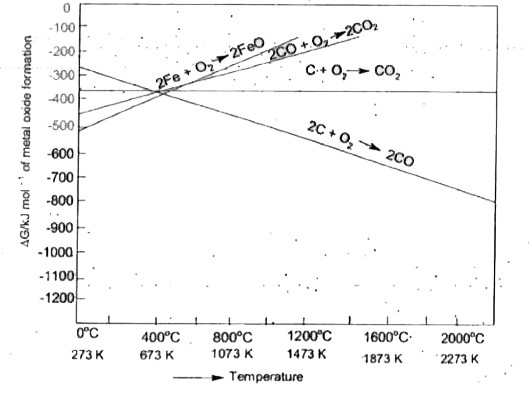The process which involves the treatment of the ore with a suitable reagent as to make it soluble while impurities remain insoluble is called :-
froth floatation process
leaching
self reduction
hydrometallurgy
The correct Answer is:B
To solve the question regarding the process that involves treating an ore with a suitable reagent to make it soluble while leaving impurities insoluble, we can follow these steps:
1. Understanding the Question: The question asks for a specific process in metallurgy where an ore is treated with a reagent to dissolve it, while the impurities do not dissolve.
2. Identifying Key Terms: The key terms in the question are "treatment of ore," "suitable reagent," "soluble," and "impurities remain insoluble." These terms suggest a separation process.
3. Reviewing Options: The options given are:
- Froth flotation process
- Leaching
- Self-reduction
- Hydrometallurgy
4. Analyzing Each Option:
- Froth Flotation Process: This is a method used to separate hydrophobic materials from hydrophilic ones, primarily used for sulfide ores.
- Leaching: This process involves treating the ore with a solvent (reagent) that dissolves the desired metal while leaving the impurities behind. This matches the description in the question.
- Self-reduction: This is a process where an ore is reduced without the addition of an external reducing agent, not relevant to the question.
- Hydrometallurgy: This is a broader term that encompasses various processes involving aqueous solutions for metal extraction, but it does not specifically refer to the process described.
5. Conclusion: Based on the analysis, the process that involves the treatment of the ore with a suitable reagent to make it soluble while impurities remain insoluble is known as Leaching.
Final Answer:
The correct answer is Leaching.
---
- Froth flotation process
- Leaching
- Self-reduction
- Hydrometallurgy
- Froth Flotation Process: This is a method used to separate hydrophobic materials from hydrophilic ones, primarily used for sulfide ores.
- Leaching: This process involves treating the ore with a solvent (reagent) that dissolves the desired metal while leaving the impurities behind. This matches the description in the question.
- Self-reduction: This is a process where an ore is reduced without the addition of an external reducing agent, not relevant to the question.
- Hydrometallurgy: This is a broader term that encompasses various processes involving aqueous solutions for metal extraction, but it does not specifically refer to the process described.
The correct answer is Leaching.
Topper's Solved these Questions
Similar Questions
STATEMENT-1 : Leaching is a proess of concentration
and
STATEMENT-2 : Leaching involves treatment of the ore with a suitable reagent so as to make it soluble while impurities remains insoluble
View SolutionAssertion:- Leaching is a process of concentration of some specific ores.
Reason:- Leaching involves treatement of the ore with a suitable reagent so as to make it soluble while impurities remains insoluble.
View Solution
Knowledge Check
Fill in the blanks with the correct choice.
The undesired impurities present in the ores are called (i)______ . To remove the volatile impurities from the ore, the (ii)______ process is carried ot Flux combines with non-fusible impurities to form (iii)______. CaO acts as a (iv)______flux.Agangue roasting slag acidicBgangue calcination slag basicCanode mud leaching matrix acidicDgangue roasting solution acidic
_____involves treating the powdered ore with a suitable reagent which selectively dissolves the ore but not the impurities.
View SolutionConcentrated ore, calamine is heated to get metal oxide and the volatile impurities escapes away. This process is called
View SolutionMetals are extracted from their ores by a wide variety of techniques. The most common ores are oxides. Most metals are obtained by direct treatment of theirs ores with chemical agents, but the extraction of certain others require electrolysis. An example of the former type of process is the extraction of iron from its oxide, described by the following equation :
Fe2O3+3C→2Fe+3CO
The relative ease of extraction of a metal from its oxide can be estimated using the Ellingham diagram, as shown in the figure.
The diagram plots the free energies of formation of various oxides per mole of consumed oxygen as a function of absolute temperature.

Which of the following best explains why the free energy of formation of Fe2O3 becomes less negative as the temperature is increased.
View SolutionThe process of isolation of metals by dissolving the ore in a suitable chemical reagent followed by precipitation of the metal by a more electropositive metal is called
View SolutionThe process of dressing of the ore which involves separation ore & gangue - due to preferential wetting
View SolutionThe process in which viruses are involved in sexual reproduction of bacteria is called
Or
The transfer of genetic material from one bacterial cell to another through a vector is
View SolutionMain ore of lead is gaalena.This is mined and separated from other minerals by froth flotation.There are two methods of extracting the lead.
(i)First method involves the roasting of ore followed by
reduction with coke or CO.
(ii)Second method involves the partial roasting of ore followed by
self reduction.
In self reduction process, the species which bring about the
reduction is :
View Solution
